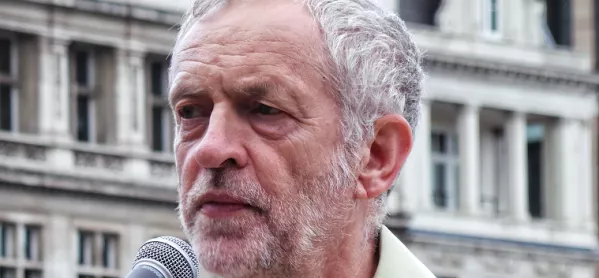
- Home
- What would Corbyn’s National Education Service actually look like?
What would Corbyn’s National Education Service actually look like?

At the 2017 general election, Labour pledged to create a “cradle to grave” National Education Service (NES). More specifically, the party pledged to restore the education maintenance allowance for 16- to 18-year-olds from lower- and middle-income backgrounds, replace advanced learner loans and upfront course fees with direct funding for further education courses.
But the most high-profile commitments concerned higher education, where Labour promised to reintroduce maintenance grants for university students - and to abolish tuition fees. Finally - and much like the promised major review of tertiary education promised by the Conservatives - Labour also proposed setting up a Commission on Lifelong Learning, tasked with better integrating further and higher education.
It is clear that moving from what the government is currently spending to funding the proposed NES will involve considerable cost. Some, such as Paul Johnson at the Institute for Fiscal Studies, have suggested it is near impossible to properly cost these commitments, but it seems helpful to at least try and establish the broad parameters. A rough baseline figure could be calculated as current government expenditure plus Labour’s additional funding promised above. In HE, then, existing grant funding of £2.8 billion plus Labour’s additional promise of £11.2 billion - and the existing expenditure in FE of £8 billion plus Labour’s promise of an additional £2.5 billion for skills. This gives a baseline annual NES budget of somewhere around £24.5 billion in 2017 prices.
Increasing expenditure
That is reasonably similar to the overall spending set out by Department for Education for 2017-18, albeit via a very different set of mechanisms. The main difference is that the NES increases current expenditure significantly by replacing off-balance-sheet loans with direct grants of various kinds.
There are of course a significant number of variables involved in these necessarily broad calculations. First is the level of demand that might result from these changes. Participation in 2014-15 in England of 3.5 million students in FE and 1.5 million in HE might be expected to increase as those falling out of the system in recent years, especially adults studying part-time, return in larger numbers.
This will bring additional open-ended costs to NES spending. But there are also some important variables that might work in the its favour - though some are likely to be more politically palatable than others. The first concerns the money that might be raised through the recently-introduced apprenticeship levy. Employers with an annual wage bill of more than £3m have been required to pay the apprenticeship levy of 0.5 per cent of their payroll above this level. In 2017-18, £1.9 billion will be spent on apprenticeship training - including from employers, via the levy. Labour has said that it will broaden the scope of the levy to fund other types of training and the NES may also choose to increase the levy pot by extending it to more employers or introducing a higher contribution rate.
Policy U-turn?
The second variable in Labour’s favour is political and concerns their frequently used “free at the point of use” promise. This might be appealing political language, not least because of its associations with the NHS, but in education spending, it can potentially have a very different meaning. Income-contingent loans for tuition and maintenance, in both further and higher education, mean that very few people are currently paying up front. Instead, they repay their loans after passing a salary threshold - recently increased from £21,000 to £25,000 for full-time, undergraduate HE loans. This means that ministers can claim that studying is free at the point of use already. For an NES, “free at the point of use” might suggest that deferred payment mechanisms could be considered as most FE and HE tuition costs already fit that description.
It seems unlikely that Labour and the NES would perform a huge policy U-turn by using this to retain the tuition fee system. However, it does provide potential wriggle room on the timing and sequence of abolishing various fees and reintroducing grants of different types, whether to students or institutions.
We can make some rough estimates about the cost of an NES, based on Labour’s spending pledges. We can also discuss whether Labour’s calculations are based on reasonable assumptions. But the challenge will be ensuring the economy will be strong enough to pay for it. Much more thought will now need to be given to how free tuition pledges and an NES follow through to smarter, more productive working. Higher and further education may end up being free - but they will still need to be valuable.
Andy Westwood is vice dean for social responsibility at the University of Manchester. He is also a visiting professor of further and higher education at the University of Wolverhampton
This is an edited version of an essay in Life Lessons: A National Education Service that leaves no adult behind, published today by the Fabian Society, with support from the University and College Union
Want to keep up with the latest education news and opinion? Follow Tes FE News on Twitter, like us on Facebook and follow us on LinkedIn
Register with Tes and you can read five free articles every month, plus you'll have access to our range of award-winning newsletters.
Keep reading for just £4.90 per month
You've reached your limit of free articles this month. Subscribe for £4.90 per month for three months and get:
- Unlimited access to all Tes magazine content
- Exclusive subscriber-only stories
- Award-winning email newsletters
You've reached your limit of free articles this month. Subscribe for £4.90 per month for three months and get:
- Unlimited access to all Tes magazine content
- Exclusive subscriber-only stories
- Award-winning email newsletters



